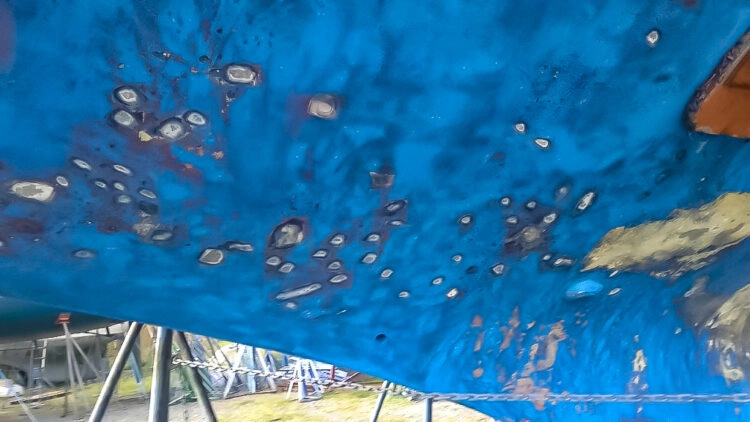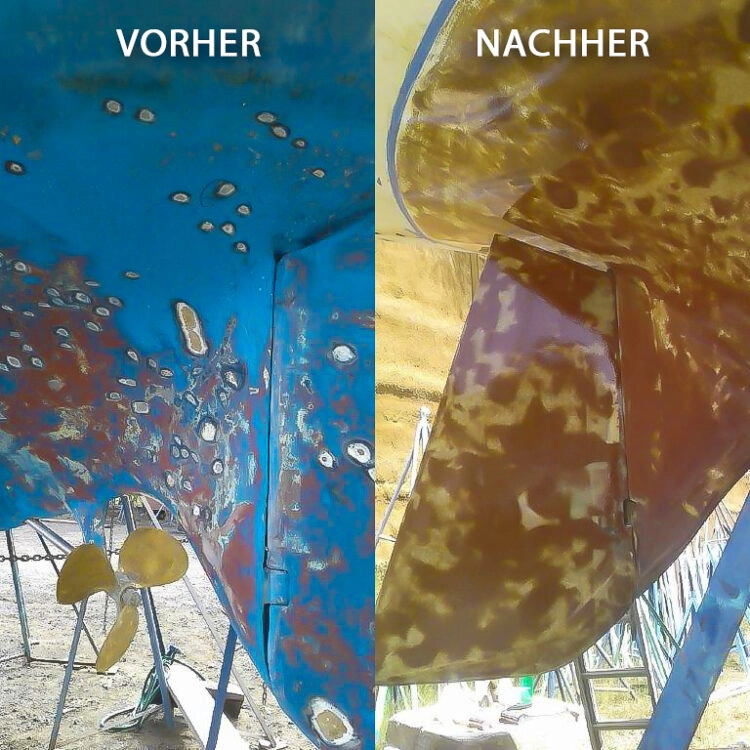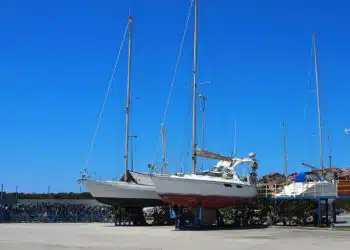Owners of GRP yachts can not avoid dealing with the issue of osmosis, because a not or not properly treated osmosis can quickly destroy the complete structure of a ship. In particular, if the yacht is to be driven for a long time in warmer waters, it is recommended in advance an inspection and, if necessary, a preventive osmosis treatment..
About this topic has already been reported a lot and yet it has not lost any of its relevance. What is it with the “polyester disease” osmosis actually on itself, and why are some yachts affected and others not? How does osmosis occur, and how can owners of polyester yachts prevent this damage to the underwater hull and thus permanently maintain the value of their yacht?
Osmosis, as Florian Zimmermann from the Ansfelden-based company Promare explains, occurs in small air pockets within the laminate layer. When moisture enters these cavities (for example, through condensation), the water in its environment slowly begins to dissolve the polyester resin through hydrolysis. Small acidic moisture inclusions would develop.
Osmosis means penetration, the decisive factor is the different chemical potential of substances
The term osmosis comes from ancient Greek and means something like penetration, says the entrepreneur, born in 1971, who has been running his own boat company since 2015, specializing in sales and consulting and also providing damage assessments of yachts. “More precisely, it means the penetration of liquids through what appears to be a solid layer,” says Zimmermann, but microscopically, a variety of surfaces are partially permeable, which is called “semipermeability.”
A good example of the property of interfaces to be semipermeable or partially permeable, he says, is ripe cherries that are wetted by rainwater and then burst open. But why exactly do the cherries burst open? “The water on the outside of the fruit contains very few dissolved particles, so it has a high chemical potential. It penetrates the fruit through the outer skin. There, the water has a low chemical potential as a solvent due to the high sugar content and other dissolved substances,” says Zimmermann.
The influx of water increases the pressure inside the fruit and eventually leads to the rupture of its outer skin, which, among other substances, is permeable to water, but not to sugar molecules. Because of precisely these properties, it acts as a “semipermeable membrane.”
When the pressure in the moisture inclusions increases, the well-known bubble formation occurs
The inclusions on the underwater hull of yachts behaved quite similarly, eventually expanding to form the classic bubbles. Here, too, the “chemical potential” plays a decisive role, says Zimmermann, a trained boat builder and Pacific sailor.
Water with dissolved substances such as salts or polyester resin particles has a lower chemical potential and thus attracts and even binds pure water with a higher chemical potential. This increases the pressure in the moisture inclusions, resulting in the familiar bubble formation with sour-smelling liquid.
If the punctured bubbles extend into the laminate, immediate action must be taken
But how do you know if it is actually osmosis?.
The yacht professional advises: “if bubbles have formed in the underwater area of the ships, and their contents smell sour when pierced, this can be an unmistakable sign”.If the pierced bubbles even reached into the laminate and exposed glass fibers, then immediate action must be taken, otherwise severe damage to the ship would threaten, which could even damage the entire structure.
If bubbles form above the gelcoat, on the other hand, there is a problem with the underwater coating. For a reliable diagnosis, it is recommended in any case to consult an expert and yacht surveyor.
Important in preventing osmosis is the use of water-resistant resins and a good barrier coat
How can osmosis be prevented? “Osmosis can be prevented if more water-resistant resins such as vinyl ester or epoxy are used for the laminate, if the laminate has as few air pockets as possible (vacuum process), or if the penetration of water is prevented by a correspondingly water-resistant barrier layer in the structure of the antifouling (for example, by using an epoxy barrier primer),” says yacht expert Zimmermann. This is also the reason, he says, why osmosis no longer occurs in modern quality yachts and boats built from epoxy.
For the restoration of osmosis-damaged yachts, Zimmermann recommends milling out the affected laminate and letting it dry out over several months. The missing laminate thickness would then need to be replenished and the surface resurfaced and sealed with an appropriate system. “A good osmosis restoration does not represent a reduction in value for older yachts, but on the contrary contributes to value retention”, says the Promare managing director. For more information & Contact: pro-mare.com.
Changes in warranty law when buying a yacht from 01.01.2022, explained by a lawyer. >> CLICK HERE <<














